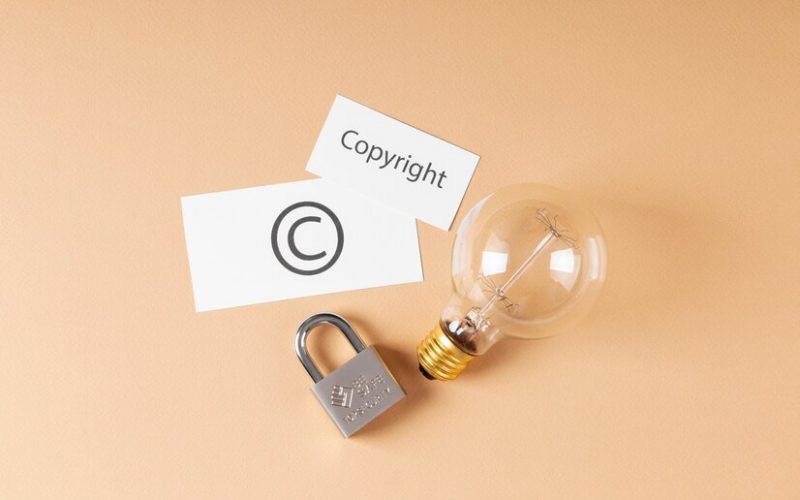Protecting your brand is important for your company’s long-term success, even in the digital age. To protect your brand means protecting your name, tagline, fonts, logo, and other valuable assets both online and offline. It involves maintaining a strong offline reputation, building trust, and encouraging client loyalty.
Protecting your brand in the real world can be difficult, and many companies look for help in this area. In this post, I will address how to protect your brand’s online and offline reputation.
Key Points
- Your brand identity is a collection of observable components that help people recognize a company in their minds, such as its color, design, and logo.
- Developing a strong brand image can increase sales over time and improve the launch of new products.
- Protecting your brand means protecting your valuable assets, both online and offline.
- Reputational risk is a threat to a brand’s good name or position.
- Protecting your brand reputation involves shielding your brand from imitations and counterfeit goods, avoiding trademark infringement, and upholding consumer loyalty.
- Maintaining a strong reputation, building trust, and encouraging client loyalty all depend on protecting your brand offline.
What is Brand Protection?
Brand protection is the process and steps a rightsholder takes to stop other parties from using its intellectual property without authorization. This is done because doing so may result in lost profits, but, more often than not, it ruins trust, reputation, and brand equity.
The foundation of brand protection is authenticity. It guarantees that consumers can have faith in the caliber and standing of a specific brand. Respecting copyright regulations is also essential to preserving authenticity. You can protect the reputation of your company and guarantee that customers will trust your goods and services by taking steps to protect your brand.
Why is it Important to Protect Your Brand?
To keep your company’s reputation intact, you must protect your brand. Protecting against imitations and counterfeit goods, avoiding trademark infringement and dilution, upholding consumer loyalty and trust through consistent branding, adhering to copyright regulations, and guaranteeing the authenticity of the goods or services the business offers are just a few of the actions that can be taken.
In addition to negatively impacting sales, counterfeit items can damage a company’s reputation and have a wide range of negative effects on its stakeholders. By defending trademarks against possible infringers, uncertainty about a brand’s meaning in the marketplace is avoided. When a company’s branding is consistent, its customers are more likely to remain loyal and trust it since they know what to expect from its offerings. In general, firms can maintain their competitiveness and reputation by implementing efficient brand protection methods.
Types of Brand Infringement
Here are the types of issues that you need to protect your brand from:
#1. Trademark Infringement:
This occurs when someone uses a registered trademark without authorization. Examples include using the original company’s name, logo, or slogan in an unrecognizable way, which may confuse customers.
#2. Counterfeiting:
Creating counterfeit goods that look and feel just like the real thing, even if they are of lesser quality and are marketed at a lower price, is another instance of brand infringement that hurts sales and the reputation of the legitimate brand.
#3. Domain Name Hijacking:
This happens when someone registers a domain name that looks a lot like the website of an already-established company to make money out of it by charging for its return or charging for advertising revenue. Customers may stop visiting reputable websites in favor of fake ones as a result of this.
#4. Copyright Piracy:
Copyrights grant the owner of the copyright exclusive rights, including the ability to duplicate, distribute, exhibit, or perform the protected work. Unauthorized use of copyrighted material by third parties is considered copyright infringement.
#5. Trademark Infringement:
Trademarks are recognizable signs, designs, or expressions that identify goods or services from a specific source and set them apart from others. When someone uses a trademark that is the same or similar to one that belongs to another party, it is considered infringement.
#6. Patent Infringement:
Patents give rise to the temporary legal right to prevent others from creating, utilizing, or commercializing an innovation. Patent theft is the use of a patented invention or method without authorization or a license.
#7. Counterfeiting:
This is the production, promotion, distribution, and retailing of counterfeit goods with the intention of profiting from the goodwill of a genuine brand. There are fake products everywhere, including on Amazon and in unsettling locations like pharmacies.
#8. Design Infringement:
For protection, brand owners can register designs, which are an item’s visual shape, such as a product. It may be considered an infringement if the protected design is used within the registration period.
#9. Social Media Impersonation:
This involves pretending to be a well-known person or brand on several social networking sites. This frequently entails an effort to mislead consumers or paint the entity in an unfavorable light. Any online environment can see brand impersonation.
Read Also: 10 BEST SOCIAL MEDIA MONITORING TOOLS IN 2024
#10. Cybersquatting:
This is when a malicious party intentionally registers a domain name in breach of their trademark rights. This can also involve registering many domain names associated with a certain brand.
#11. Imitation Sites:
These are websites that make an effort to pose as reputable brands, frequently with the intention of committing fraud.
#12. Typosquatting:
This is the malicious registration of a domain name with a trademark typo that is intentionally registered abusively and depends on visitor error to generate traffic.
In essence, brand protection addresses a variety of issues that businesses encounter.
Now that we have understood the dangers facing your brand lets look at how to protect your brand online.
How to Protect Your Brand Online
By following these easy steps, you can protect your brand against those who would take advantage of your brand identity for their own financial gain.
#1. Trademark Your Brand
In simple terms, registering your brand name as a trademark is the most secure way to give your brand legal protection against competitors and third parties, as well as prevent competition from usurping the market credibility your brand has built since it was established.
For example, the Beatles first had their own record label, Apple Corps. Steve Jobs presented Apple Computer (now Apple Inc.) to the world eight years later. Over the years, the two enormous corporations have fought each other in court.
Following the first round, Apple Inc. consented to refrain from entering the music industry and to pay Apple Corps a financial settlement. As it stands, avoid using the word “apple” in any way related to your business if it has anything to do with computers or music.
Read Also: How To Trademark a Name: Importance, Tips & All You Need
#2. Brand Your Domain
Your brand name and domain name ought to be the same, ideally. You could have to use a different name online because so many domains are already used, which means you lose the advantage of your current brand awareness. At least incorporate your brand name into your domain if you are unable to make it your domain name.
Therefore, you should purchase all of the major, pertinent domains—such as.com ,.co.uk, and .info—as soon as you can to avoid cybersquatting, which is the practice of someone registering a name and utilizing it for business or other purposes. You will need an e-commerce website developer to do this.
Here are just a few companies that have acquired premium domain names:
- 1800flowers: Flowers.com
- Aerial Group: Aerial.com
- BabyCenter: Baby.com
- Boston Globe: Globe.com
- Calvin Klein: Underwear.com
- Disney: Family.com, Kid.com
- Fashion Nova: Fashion.com
- Google: Android.com
- Guaranteed Rate: Rate.com
- Health Magazine/Time Inc.: Health.com
- History Channel: History.com
- Honda: Motorcycles.com
- Intel: Chips.com, PC.com
- Jansen Biotech (Johnson&Johnson): Cancer.com
- Kraft Heinz: Sauces.com
- Microsoft: Docs.com, Office.com
- Nestle: Meals.com
- Salesforce: Force.com
- Weather Channel: Weather.com
#3. Prevent Domain Hijacking
Verify that your domain registrar has “locked” your domain in order to prevent unauthorized transfer requests. If you don’t, someone could take over your domain, if only temporarily, by deceiving your registrar into granting them control—for example, by pretending you’ve left the firm and they’ve taken over your domain registration.
Additionally, you can use antivirus software that can identify and block malicious emails before they reach your inbox.
#4. Make Your Website Hacker-proof.
A hacked website can have both short-term and long-term negative effects on your company’s reputation. Although the majority of hackers enter for the challenge rather than with actual malicious intent, they almost always leave a trace of their unwanted presence. This can involve anything from changing or tampering with your main page to removing files from the website, possibly including your most recent order batch.
For example, in August 2013, Yahoo revealed that 1 billion accounts had been hijacked by a group of hackers. Consequently, Yahoo made all impacted users change their passwords and resubmit any security questions and answers that were not encrypted in order to re-encrypt them.
One of the most common types of hacks uses a dictionary to try to guess your FTP password. Therefore, make sure your password is not a single word in the dictionary, and make sure it is not easy to guess or stored anywhere an unauthorized person could find it. And if anyone who knows it leaves your company, change it right away. If you manage your domain name through an online control panel, treat that in the same way.
Additionally, you should use a safe e-commerce package for online orders so that credit card information is stored in an encrypted manner. This will ensure that:
- Your clients will be safe,
- Your online sales won’t be impacted even if your site is hacked,
- Your reputation will be mostly intact.
#5. Take Ownership of Your Brand.
Make sure your brand name and logo are displayed prominently on every page of your e-commerce website and in every downloadable document. You should be fully entitled to the ownership of your brand. Make it clear that you plan to protect that ownership to the fullest extent possible without going overboard.
#6. Ensure that Your Brand Appears in Search Results.
Your goal ought to be to rank first on Google for any queries related to your brand. This may be difficult to accomplish in practice, but don’t let that deter you from trying. Make your home page as optimized as possible for your brand name by including it in the meta description, meta keywords, and page title, as well as in-text links that drive users from other pages to the main page.
Additionally, you should also use your brand name three or four times on the page. This will ensure that you appear higher than any of your rivals in the search results.
For example, typing the word “apple” will show you the Apple brand rather than the apple fruit.
#7. Protect Your Copyright
Infringement of copyright occurs when an individual unlawfully duplicates, circulates, executes, showcases, and engenders the unique work of the copyright author.
In 1999, while the internet was still in its infancy, Shawn Fanning, a technological genius, created a piece of software called Napster. Music can be freely shared and downloaded with this peer-to-peer file-sharing software.
In 2000, Lars Ulrich, the drummer for Metallica, launched a lawsuit against the software’s developer, claiming improper use of a digital audio interface device, and copyright infringement.
In 2002, the software company was found guilty of vicarious copyright infringement, as claimed by the plaintiffs. Napster was forced to shut down that year, which angered the public. They also had to issue a public apology and pay up to $26 million in damages.
Therefore, you should place a copyright disclaimer on each page of your e-commerce website and in any online publications you make (such as PDFs). Periodically look up a few original terms you’ve used on your website on Google, enclosing them in quotes, to check if anyone else has duplicated them. If they are resellers or partners, then there might not be an issue. If not, send them an email or letter requesting that the content be removed. Get a lawyer to draft a formal “cease and desist” order and threaten legal action if they don’t comply.
Read Also: HOW TO COPYRIGHT A NAME: Cost and Guide to Use in 2023
#8. Watch out for “Fakes” in Search Advertising.
Online rivals may attempt to take advantage of your brand name by paying search engines to show their “pay-per-click” commercial to every person who looks you up. Customers may find this to be misleading and confusing behavior.
This used to target a variety of brands, including Tesco, Airbnb, McDonald’s, and Argos. When users click on the fake ad, they are directed to the fake shop site shown below (agross[.]store).
You can stop advertising against your registered trademark, as Google and Yahoo have policies for handling trademark infringements. Although it can frequently save time and effort to go directly to the search engine and get it deleted, try sending the offender an email requesting them to stop.
Read Also: How I Identify Spammy Sites & Deal With Them (Expert Guide)
#9. Keep an Eye on Your Competitors.
It’s important to keep an eye on your market to make sure rivals are not violating your brand. You can achieve this by looking for your company’s tagline on search engine results pages or by visiting the websites of your rivals.

The Power of Brand Monitoring Software: Unlocking Consumer Insights
Now lets look at how to protect your brand offline.
How to Protect Your Brand Offline
You can protect your brand offline by implementing these five strategies.
#1. Improve Your Establishment’s Physical Security.
Prioritizing the security of your business premises is necessary to ensure the offline safety of your brand. You should install security cameras and alarms that monitor activities and help reduce the incidence of theft.
#2. Protect Your Intellectual Property
Brand identity is derived from its intellectual property (IP), which includes distinctive features and logos. The long-term success of your organization depends on protecting these assets.
Therefore, it is important to register patents, trademarks, and copyrights in order to safeguard your intellectual property. You will need the services of an IP attorney since they can assist you with the procedure and make sure that all legal standards are met.
For example, Coca-Cola takes great care to guard its secret formula as a trade secret, further safeguarding its intellectual property.
#3. Monitor Your Brand’s Reputation.
You can monitor your brand’s reputation by routinely assessing employee retention rates and customer feedback. Surveys, review analysis, and working with outside organizations can offer objective information and insightful criticism.
Furthermore, building trust and loyalty with customers depends on how quickly you respond to their issues. Employees are the company’s representatives; therefore, maintaining the organization’s reputation depends on their understanding of its objectives. Therefore, to guarantee the brand’s proper portrayal, your employees must understand its guiding principles.
Checklist for Building a Solid Brand Reputation
#4. Establishing Consistent Brand Guidelines.
The corporate image and messaging of a corporation are greatly influenced by consistency. Creating thorough internal brand rules that cover every facet of the company, from promotional materials to employee conduct, is crucial to achieving this. These rules cover visual and verbal components, such as tone of voice, color schemes, and logo usage.
It is therefore best to check and approve all content before sharing it to avoid deceptive advertising. You can avoid inconsistent branding by taking this action.
By implementing and adhering to internal brand guidelines, you can establish a unified and cohesive brand identity, ensuring that all aspects of your business consistently align with your desired image and message.
#5. Maintain Quality Assurance.
Maintaining a brand’s reputation requires a focus on quality assurance. Providing employees with state-of-the-art equipment enables them to deliver superior offerings. For example, a doughnut factory could purchase sophisticated machines and train their staff on the best way to make doughnuts. This guarantees that every doughnut meets the client’s expectations and solidifies the brand’s position in the market.
Furthermore, it is imperative to closely monitor factors, including raw materials, production procedures, packaging, and distribution. Consequently, carrying out routine audits and inspections aids in locating potential areas for improvement.
Therefore, you should prioritize quality control to ensure that you consistently provide high-quality goods or services that will satisfy customers and build your brand’s reputation.
Read Also: Building Trust Through Quality: Small Business Edition
#6. Make Intelligent Partnership Choices.
It’s critical to choose partners who share your brand’s values, since collaborations have a big impact on how people perceive your company. It’s crucial to carry out an in-depth background investigation and set precise expectations through partnership agreements.
For example, Shell and LEGO collaborated, and everything went smoothly until LEGO became one of the world’s largest toy brands.
Since children are the main target market for Lego, Shell’s dubious environmental policies put LEGO at odds with everything it stands for. Greenpeace’s activism and public uproar led to the dissolution of the alliance.
Therefore, you can make sure that your brand is connected to groups that share your values and keep a consistent brand identity that appeals to your target market by being picky about the relationships you enter into.
Read Also: How Brand Partnerships Can Improve Consumer Engagement and Business Growth
In the next paragraph lets look at how to protect your brand reputation.
How To Protect Your Brand Reputation
#1. You Should Have a Dedicated PR Team.
Your PR team may not be able to handle a bad PR crisis on its own; therefore, you may need the support of a well-trained PR communications staff and a well-established operating procedure. To obtain diverse and objective viewpoints on the situation, the team should appoint and rely on subject-matter professionals who can handle media relations without jeopardizing legal concerns.
You can clarify the roles by using the following questions:
- Who is in charge of the crisis response plan?
- Who is going to keep an eye out for possible crises?
- Who will inform the important stakeholders about the crisis?
- Who controls social media?
- Who manages the communication channels?
- Who will represent the media as their spokesperson?
#2. Invest in PR Tools.
Having PR tools at your disposal is essential to handling any situation head-on. Invest in media monitoring services and PR tools like Brand24, which can scour the internet in real-time, including social media, to identify any possible disasters affecting your company. These solutions can also detect and notify you about disgruntled clients and a significant stakeholder who might have tweeted something improper.
#3. Actively Manage Your Brand Image.
You can leverage your reputation and brand image to increase revenue, increase lead generation, and foster client loyalty. So how do you improve the reputation of your brand?
Therefore, you should:
- Keep an eye out for mentions of your brand and comments made by users to gain insight into what others are saying about your company.
- Establish a team that can react quickly to criticism and does so in real time.
- Ensure that all of your communications are consistent and in line with the company’s branding and social media strategy.
#4. Make Use of Press Releases.
These days, your internet reputation primarily depends on how Google rates you. Press release distribution and several media sites publishing them are certain approaches to giving Google the impression that your business is reputable and reliable.
Read Also: Press Release Examples to Inspire You in 2024 (+ Expert Tips & Templates)
#5. Make Your Content Accessible Online.
You should invest in web accessibility solutions that you can use to address compliance issues and reduce the risk of any reputational damage to your business.
Related Articles:
PUBLIC RELATIONS SERVICES: The PR Blueprint for Getting Your Brand Noticed
The Top 2024 Brand Mention Tools (All You Need)
BRAND ASSETS: 13 Examples That Will Strengthen Your Band






